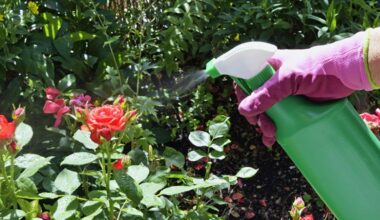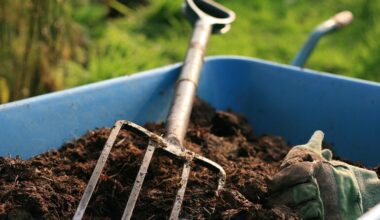Little by little, the cold weather is settling in and it is time to start thinking about protecting your outdoor plants. For those in pots, you can bring them inside your home or under a shelter (greenhouse or winter garden) during the winter.
For the other plants well established in the garden, you will have to think about the type of protection to bring to counter the cold and the frosts. Unfortunately, not all plants are hardy and you will certainly lose some during the cold season. But to limit the damage, here are some solutions to protect your garden plants.
Contents
Do all plants die from frost?
Absolutely not. Many plants can withstand excessively low temperatures, especially when they have been in the ground for many years. If this were not the case, the earth would be a sad desert!
What type of plants does frost kill?
It is not that simple. Not all plants are killed by frost, and some frost-sensitive plants can withstand it as long as you prepare for winter by mulching, protecting them with a winter cover, stopping watering and storing potted plants indoors.
When the cold weather comes early and you are not yet prepared, frosty plants can suffer.
What does a plant that has suffered a frostbite look like?
The poor plant looks bad: its leaves are soft and hanging, they lost their beautiful green color, they even became black…
The black parts are in fact necrotic tissues, i.e. dead. The vital prognosis of the plant is not necessarily compromised, even if the aerial part seems to have suffered a lot, it is possible that the roots have survived.
What to do to save a frozen plant?
Even if it sometimes looks bad, a frozen plant is not necessarily dead. Its leaves have dried up in a few hours, are curled up and have a very suspicious brown color. You can therefore see that the aerial part of the plant has suffered. But the roots – since they are in the ground – have probably not suffered the same damage.
How to save a plant frozen in the ground?
Nature doesn’t need us to intervene systematically in this case. Leave the frozen foliage in place as it will continue to insulate the roots and protect them from subsequent frosts. Wait until spring, or even the beginning of June for some plants: you should see the plant recover with the birth of new shoots.
How to save a frozen plant in a pot?
In this case, the matter is more complicated because the roots are in a small volume of soil which does not manage to warm them up. Often, they also suffer from being compressed due to the transformation of water into ice. For this reason, when frost threatens, it is absolutely necessary to ban all watering of potted plants such as lobelia, begonia, geranium, fuchsia or even camellia and azalea.
When the damage is done, there may still be a way to save a frozen potted plant if a small part has been spared.
Cut off all burned branches with disinfected secateurs without delay, keeping only those that are intact, if any, or as close to the ground as possible if all the aerial part is frozen.
This will give you a better chance of saving the roots. Then store your plant in a well sheltered place. Maybe you will be lucky enough to see new shoots reappear some time later… In any case, you will have to take more precautions the following year. And beware of dangerous spring frosts for the apricot tree for example.
How to prepare for winter and frost
In our climates, plants gradually develop tolerance to sub-zero temperatures before the winter cold. This is called frost hardening. This phenomenon is induced by the cool but positive temperatures of the fall and early winter. Thus, in spring and summer, plants generally cannot withstand temperatures below 28°F or 24°F, while in winter, most plants native to temperate zones can withstand temperatures below 14°F. In winter, for example, the leaves of grasses can tolerate temperatures around 5°F, while fir needles can withstand cold temperatures of -4 to -31°C.
Frost hardening is quickly lost as soon as the temperature rises in late winter. This is why spring frosts, even if they are of low intensity, are more dangerous than even very low winter temperatures. This phenomenon involves different mechanisms among which the enrichment of membrane lipids in polyunsaturated fatty acids, which improves the fluidity of the membranes, an increase in the contents of soluble sugars (glucose, fructose, sucrose…) and amino acids, which allows the lowering of the freezing point.
The good knowledge of the response of plants to low temperatures allows to make a reasoned choice of the species to be used in gardens or green spaces and to propose means of protection against the cold (mulching).
It is also possible to place the plants in cool or slightly heated premises for the duration of the winter (this is called wintering). Orangeries had this function to shelter and preserve sensitive tropical or Mediterranean species.
Frost damage to plants
Frost causes devastating damage to plant cells. When water freezes, it expands, causing cells to burst. Then, when temperatures warm up again, those cells suffer further damage from dehydration. The young cells are the most fragile, and so the young leaves and also the flowers and flower buds are the most damaged.
More mature cells can tolerate a little more cold, or at least longer periods of cold. The cold passes through thin stems quickly, but takes longer to penetrate thicker stems… and the bark, if any, also provides some insulation. For these reasons, when the plant survives the frost, the parts least affected tend to be those inside the branch (thus less exposed to the wind), the oldest branches… and the base of the plant.
Houseplants that have the ability to regenerate from their base, roots or underground rhizomes, bulbs or tubers are the most likely to recover from frost. Potting soil tends to retain heat and the larger the pot and the larger the potting soil mass, the better the insulation. It may take several cold nights in a row before the potting soil freezes completely.
The tips and edges of the leaves are the most susceptible to frost, followed by the rest of the leaf blade. The veins, being thicker, are better insulated and often stay green longer but, if the frost persists, eventually the whole leaf will succumb, turning brown or black and soggy. Sometimes it falls off, sometimes it dries out. Flowers and flower buds react in the same way.
The leaves on the inner part of the plant may remain intact, especially if there was little wind. Non-woody stems turn brown or black when they freeze and may curl, soften or even collapse; those that are more woody may show no signs of damage other than leaf drop.








